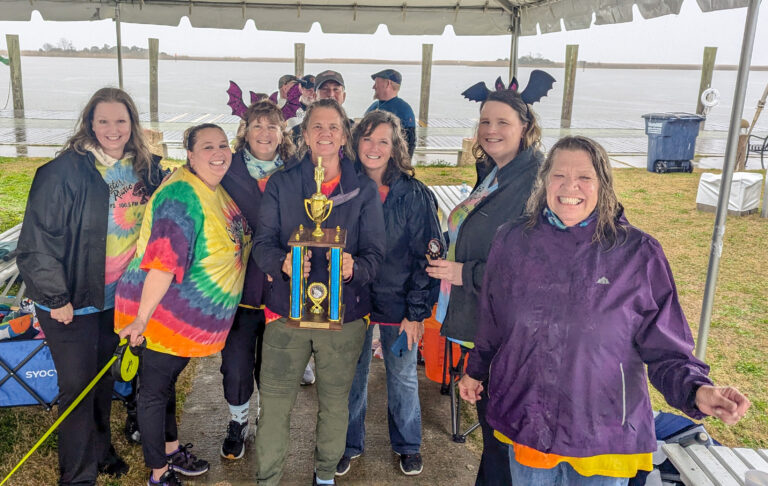Legacy Post Disclaimer
This is a #Legacy post imported from The Apalachicola Time’s previous platform. If you’re experiencing issues with this article, please email us at news@nevespublishing.com.
Apalachicola Planning and Zoning gives go-ahead to downtown marina
The Apalachicola planning and zoning board Monday evening voted unanimously to give the proposed Boss Oyster Marina project, the largest downtown riverfront project in two decades, a giant thumbs-up.
With a set of conditions, largely pertaining to a lengthy list of required state and federal environmental and stormwater permits, P & Z gave the go-ahead to a plan by developers to raze the delipidated remnants of the 24-room Apalachicola River Inn, Caroline’s River Dining, Roseate Spoonbill Lounge and Boss Oyster restaurant.
Following that, the Panama City-based Apalachicola Trading Company LLC would construct on the site a 76-slip marina and a rebuilt 150-seat Boss Oyster restaurant, enhanced with the first piece of what city officials hope may someday be a public boardwalk extending the length of the riverfront.
One key condition laid down by P & Z was that the developers adhere strictly to the city’s parking requirements, which as they stand now, would mean they provide at least one space for every slip. If city commissioners do not modify these rules, or allow for mitigation, then the developers would have to scale back their usable boat slips by as many as two dozen.
“Parking has always been one of the banes of Apalachicola,” Dan Garlick, the project’s environmental engineering consultant, told P & Z. “We can meet the provisions of the restaurant; the driving force is the marina.”
P & Z left it up to City Planner Bree Robinson and other city staffers to ensure compliance with the parking requirements, with at least one member, Bobby Miller, suggesting that the city take steps to ratchet back its “one space per slip” policy.
“My goal would be to petition the city commission and change to an 80 percent rule,” he said. “All marinas I talked to said they have never come close to 100 percent, it was more like 75 percent as best I can guess, and this doesn’t even include the transients.
“I can think of a lot of worse things to go in this area; this is a good thing,” Miller said. “Right now we can’t view the water, and that’s Apalachicola, this is what we are. I’d like to see this project go forward.”
Discussion of parking took up much of the discussion Monday evening before a packed audience, with resident Gordon Adkins, who lives close by at Commerce Street and Leslie Street, and Beth Embert, who operates the Blue Moon Inn nearby, both expressing concern.
“There are only seven spaces on Leslie Street between Market and Water streets,” Embert said, noting that once the street is reopened to traffic, travelers coming off the bridge will likely make a right turn and park there.
“We are packed in like little tiny sardines,” she said, voicing support for the project but asking that developers “don’t skimp on anything you can do for parking on your property.”
Garlick said the parking plan is intended to make maximum use of permeable lot coverage by putting in oyster shells on the marina site. “We’re trying to organize it to get more parking spaces in there,” he said. “We don’t have to pave it, now it’s going to be organized.”
Adkins suggested developers consider mitigating the parking requirement by adding spaces elsewhere in downtown, although Garlick said any spaces added more than 500 feet from the project area could not be factored into the calculation.
“Why don’t we use this as an opportunity to have your principals fund purchasing property in an outlying area and establish some sort of shuttle service?” asked Adkins. “I don’t think Apalachicola would want mega-entrepreneurs to drown out smaller entrepreneurs.”
P & Z Chairman Al Ingle said talks have been ongoing with developers for several months, working out details of the proposal to ensure it met all of the city’s requirements.
He said that because the city’s land development code specifies that no buildings in the riverfront area be greater than 8,500 square feet, the plans calls for a one-foot gap between between the open deck and the 8,166-square-foot enclosed space of the 11,222 square foot reconstructed Boss Oyster restaurant.
Ingle said the change will enable the project to meet code, and not run afoul of the spirit of the original rule, where an argument can be made over the term “foundation.”
“The (original) words may have meant something else,” he said. “It’s a thing where they (the developers) may not have been deliberately violating the land development code.”
Georgia Ackerman, speaking on behalf of the Apalachicola Riverkeeper, saids the group wants to see a thriving business on the site, and stressed that a deliberate attempt be made to ensure compliance with environmental rules to lessen any negative impact of the high-traffic marina.
“We ask that you give consideration of whether the size and scope is consistent with the city’s vision,” she said, asking questions regarding sewer hookup, possible dredging and secondary containment regarding the fueling stations which the developers are seeking approval for from the Florida Department of Environmental Protection.
Ackeman also asked that a riprap revetment be put in. Garlick said that the project calls for a natural shoreline with eel grass, with a retainer wall, set back 10 feet from the river, that works in conjunction with the structure of the building.
In introducing the project, Apalachicola businessman Steven Etchen, one of the investors in the project, said the design of the project had evolved ever since the developers bought the land out of bankruptcy three years ago.
“We really didn’t know what we could do, we jumped in head first from the heart and the gut,” he said. “Our first instinct was to throw duct tape around the thing and start slinging oysters as soon as possible.”
He said flood plain considerations would have required building up 10 to 15 feet off the ground, at considerable expense, with limitations on what would be permissible under waterfront zoning.
“The biggest trends have been the transition from a commercial-industrial economy to tourism-based economies,” Etchen said. “We looked at what we could do with hotel-motel overnight rentals and we really don’t believe that’s what the community needs, especially on the riverfront.
“We endeavored to create something more of a feature for downtown Apalachicola, opening it up and creating parks and green spaces,” he said, noting that there’s currently a waiting list at nearby Scipio Creek Marina. “We think this recreational boat application will be useful for local and transient boaters.”





Meet the Editor
David Adlerstein, The Apalachicola Times’ digital editor, started with the news outlet in January 2002 as a reporter.
Prior to then, David Adlerstein began as a newspaperman with a small Boston weekly, after graduating magna cum laude from Brandeis University in Waltham, Massachusetts. He later edited the weekly Bellville Times, and as business reporter for the daily Marion Star, both not far from his hometown of Columbus, Ohio.
In 1995, he moved to South Florida, and worked as a business reporter and editor of Medical Business newspaper. In Jan. 2002, he began with the Apalachicola Times, first as reporter and later as editor, and in Oct. 2020, also began editing the Port St. Joe Star.